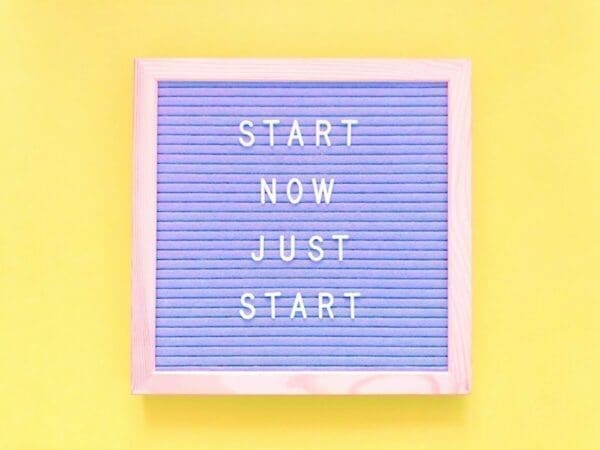Why and How Do You Prioritise Your Work?
In today’s fast-paced world, we are constantly faced with a never-ending list of tasks and responsibilities. With so much to do and so little time, it can be overwhelming to decide where to focus our energy. That’s why it’s important to learn how to prioritise.
Prioritising allows us to focus on the most important tasks first, ensuring that we are using our time and resources in the most efficient way possible. In this blog post, we’ll discuss 8 immediate and practical methods that will help you prioritise your tasks and responsibilities. So, whether you’re a busy professional, a student, or a stay-at-home parent, learning how to prioritise will help you achieve your goals and make the most of your time.
Heads up: Prioritising your work is a mindset challenge. Ask yourself, why do you want to prioritise your work? If the answer is compelling enough you will overcome the change formula and start to prioritise your work using some of these methods.
Attention: Subscribe through LinkedIn to know when we publish a new article.
#1: How Do You Prioritise Your Work? – Eat That Frog
Brian Tracy, the time management genius from the USA, wrote a great book called, ‘Eat that Frog’. He wrote that if you had to do one difficult thing each day and you did it first then the rest of your day would be much easier. He was suggesting that you do the biggest and most difficult task first.
Action: Each day identify the task that you don’t want to do – the frog – do it, and the rest of your day will be much easier to do.

#2: The Most Successful People Are the Ones with the Emptiest Heads – Write It Down
You cannot prioritise what you don’t know. Get the list of what you need to do out of your head and onto a piece of paper or onto an electronic version. Once you have a complete list of what you need to do, it is then possible to prioritise what you need to do. Don’t attempt to write a list and prioritise it at the same time. The brain needs to do the two tasks separately; write, and then order.
Action: Write down what you have to do into a list.
#3: How Do You Prioritise Your Work? – Just Start
Sometimes our inertia can prevent us from doing anything. Like we are frozen, unwilling to move forward because the task is too daunting.
Action: When this happens identify one small and practical action to start. For example, instead of writing ‘Move house’ on your to-do list, write ‘Phone estate agent’, because the latter is a smaller task that is less daunting. Once this task is complete the snowball will begin rolling down the hill and other actions will start to ‘complete themselves.’

Sticky Learning ® is 7 times more effective than 1-day training courses. Plus, you will get a Chain of Evidence proving your Return on Investment. Discover soft skills training that changes behaviours long term.

#4: Ask Your Boss
One of the roles of a boss is to help their teams to prioritise what they need to do. After all, a boss sees the bigger picture and knows what needs to be done for the business to succeed. Don’t ask your boss ‘What should I do first?’. Instead, write a list of projects that you are working on and ask them to asterisk the top 3 that need doing.
Action: Write a list of projects that you are working on. You don’t want to show your boss a list of everything, including the small actions. Instead, they need to see a list of the higher-level work that you have on your plate. They can then help you to prioritise.
#5: How Do You Prioritise Your Work? – Why Are You on the Payroll?
When we ask this question in our time management training most Learners write a list as long as their arm. We then instruct them to throw that list away. The reason you are on the payroll is to make the company money unless you are a charity. You should have 3 targets that make a difference, ultimately, to the bottom line.
Action: Identify your 3 key targets. If you do not have them, read this article about Key Result Areas and then ask your boss to help you identify them. Keeping these 3 targets at the front of your mind will help you prioritise. Because if you cannot see a connection between the task you are doing and any one of the 3 targets, then it is unlikely to be a priority.
#6: Use the Abc Method

So, you have a to-do list and you are feeling overwhelmed about where to start.
Action: Follow these steps:
-
- Using your to-do list, write in the left-hand margin all the tasks that absolutely must be done today. Mark them with an ‘A’.
- Using your to-do list, write in the left-hand margin all the tasks that ideally need to be done today. Mark them with a ‘B’.
- Using your to-do list, write in the left-hand margin all the tasks that could be done today. Mark them with a ‘C’.
- Then against each of the A’s write a number. For the ‘A’ that needs to be done first write ‘1’ next to it to make ‘A1’.
- Then against each of the B’s write a number like you did for the A’s in step 4. For example, add ‘1’ to make ‘B1’.
- Against each of the C’s write a number like you did for step 4.
- Now do the ‘A1’ task, and then move to ‘A2’, until all the ‘A’s are complete, and then do ‘B1’. And so on.
#7: How Do You Prioritise Your Work? – Stop the QFE
If the task you start doing feels good then it is likely to be quick, fun, or easy, and is therefore probably not the best task to be done. It is unlikely to be a priority task. Rarely are the easy tasks the ones that make the real difference. Sometimes they are. Mostly, they are not.
Action: Use your instincts. If it feels easy, stop. Try another task that feels like it will need real focus and real concentration. That is likely to be a priority task.
#8: Use the Eisenhower Way
President Eisenhower was credited with creating the urgent and important matrix. You’ve probably heard of it. In essence, it is 4 boxes of 2 axes; urgent and important. The 4 boxes then become, at their extremes; low urgency & low importance, and then high urgency & high importance.
Action: Draw an urgent and important matrix on a pad. Write your to-do’s on post-it notes. Now place your to-do’s in the boxes. This will provide you with a prioritisation of your work because you will see what needs doing now – The High Urgent and High Important box, and what can wait – The Low Urgent and Low Important box.

Here’s a Summary of the 8 immediate & Practical Methods to Prioritise Your Work
- Eat that Frog
- The Most Successful People are the Ones with the Emptiest Heads – Write it Down
- Just Start
- Ask Your Boss
- Why are You on the Payroll?
- Use the ABC Method
- Stop the QFE
- Use the Eisenhower Way




